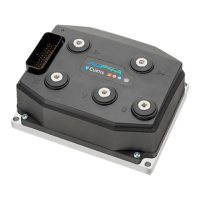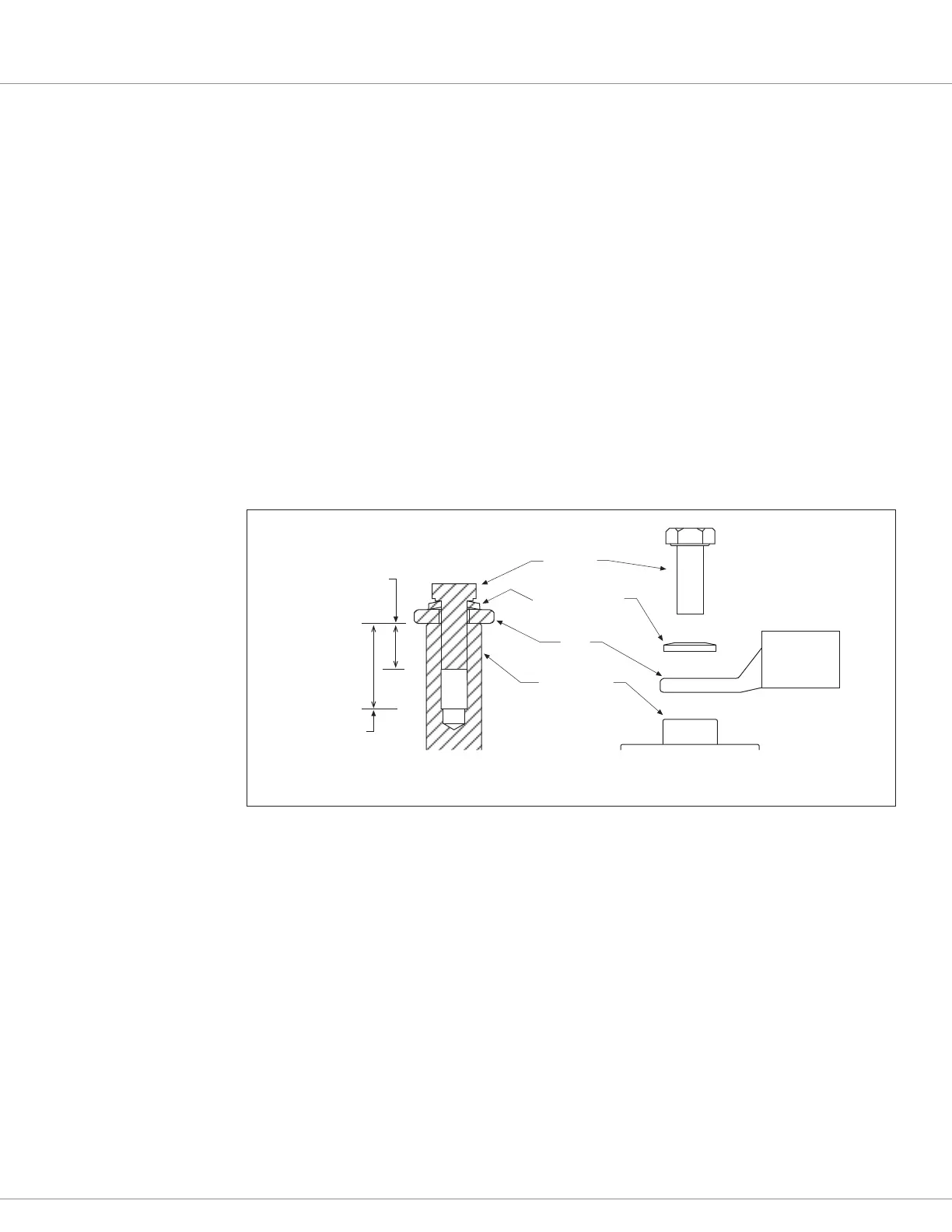2 — INSTALLATION AND WIRING
pg. 5
Return to TOC Curtis AC F4-A Motor Controller – August 2020
e high power connections are aluminum M6 terminals. Terminate the battery and motor cables
with high quality (tin-plated) copper lugs to match the application. Ensure the M6 bolts are the
proper length to meet the minimum thread depth engagement. Do not bottom-out the bolts in any
terminal. Follow Figure 3 connection guidelines:
• Place the lug on top of the aluminum terminal, followed by a high-load safety washer with its
convex side on top. e washer should be a SCHNORR 416320, or equivalent.
• For terminal connections with more than one lug, stack them so the lug carrying the least
current is on top.
• Ensure the clamping bolt is within the minimum and maximum depth when assembled.
• Tighten the assembly to 10.2 ±1.1 Nm (90 ±10 in-lbs.).
When routing the battery cables between the battery and controller, run the positive and negative
battery cables close to each other, avoiding pinch-points and areas of possible cable abrasion.
Typically, the positive cable is red and the negative cable is black. e motor phase cables are oen
black, yet clearly labeled at both ends. Reference Appendix B, Vehicle Design Considerations for
EMC guidelines.
Figure 3
Battery Power
and Motor
Phase Terminal
Connections
M6 BOLT
HIGH LOAD
SAFETY WASHER
LUG
M6 TERMINAL
SECTION VIEW
F4-A TERMINALS
EXPLODED VIEW
10 mm MIN
DEPTH
18 mm
MAX
DEPTH

